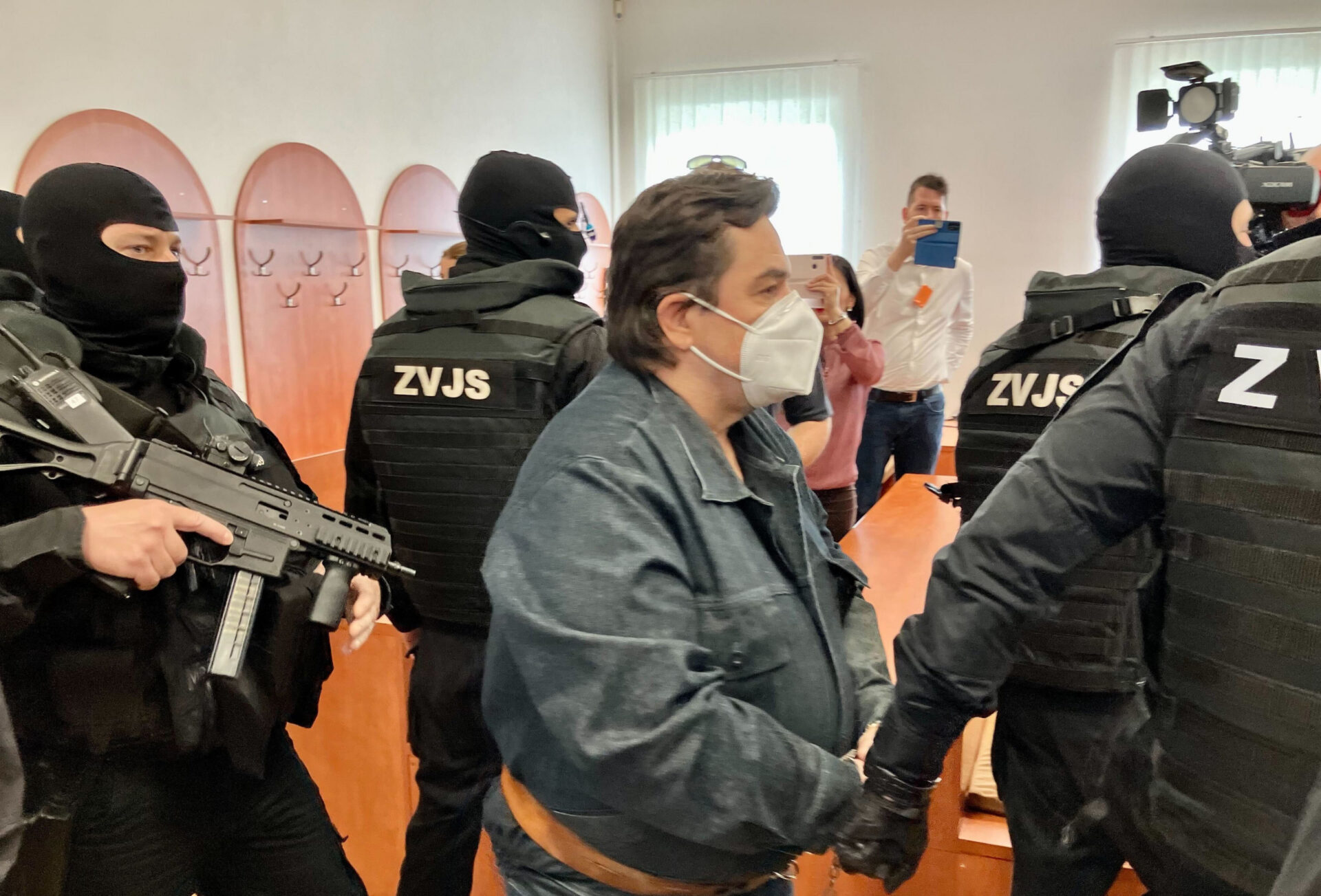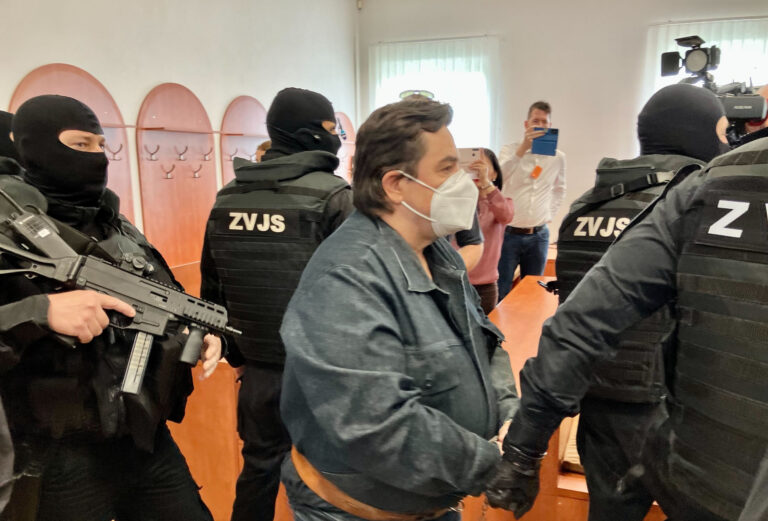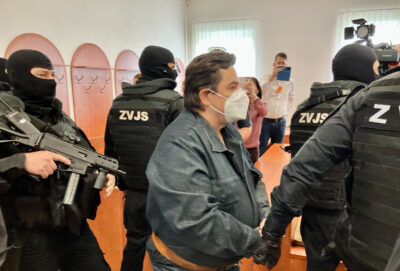The court has decided that Marian Kočner is not guilty of ordering the murder of investigative journalist Ján Kuciak. The court found his accomplice Alena Zsuzsová, who worked for him mostly as a honey-trap, guilty for ordering this and other murders, but decided that it was not proven that the acts were also committed by Marian Kočner.
In 2018, a heinous crime shook the social and political foundations of the Slovak Republic. Investigative journalist Ján Kuciak and his fiancée Martina Kušnírová were found dead in their home in a small village in western Slovakia, Veľká Mača.
Both brutally shot, Martina’s body lay in the kitchen. Her laptop remained open on the table. A browser window showing wedding dresses, which she was looking at just before a bullet hit her head. Ján’s body, crouched on the stairs to the basement, the bullet pierced his heart.
Today, Slovakia heard the verdict with the man who stands trial and retrial for the murder since 2020. Marian Kočner was, once again, found not guilty.
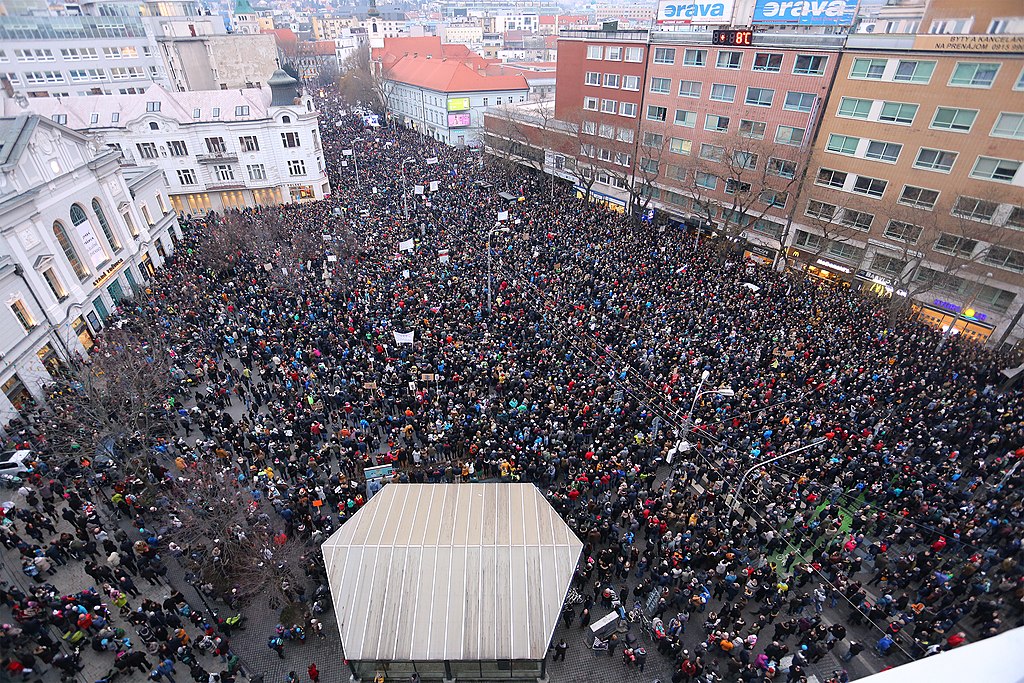
Protest at the SNP Square on 9th of March 2018 in response to the murder of Ján Kuciak and Martina Kušnírová. 9 March 2018
Source: Slavomír Frešo / Wikimedia Commons
The fallout from the crime was great. The prime minister, the interior minister, and the police chief resigned. In the elections that followed, Robert Fico’s Smer-SD party, perceived by voters as guilty of allowing the mafia state to grow, lost, and lost badly. Marian Kočner was seen as a symptom of a larger disease. The convicted fraudster, but for now acquitted for murder, has long enjoyed the feeling of being “untouchable” by police, prosecutors or judges.
That time is now up. Even though today he was found not guilty, he is already serving 19 years prison sentence for another economic crime.
Kočner’s accomplice Zuzana Zsuzsová, whom he mostly used as a honey-trap, was however found guilty for ordering murder of not just Ján Kuciak, but also the prosecutors Maroš Žilinka (nowadays the Prosecutor General) and Peter Šufliarsky (first secretary to the Prosecutor General at the time), whom she considered to be a threat to Marian Kočner, her boss. The murder of the prosecutors was stopped before hitmen finished their jobs, unlike the murder of the journalist and his fiancé.
The senate said that she ordered all these murders „in fear of losing her regular monthly income and other benefits provided to her by defendant Marian Kočner.” The court sentenced her for 25 years in maximum security prison. All three members of the senate agreed that Zsuzsová is guilty.
The argument of the court therefore is that Alena Zsuzsová, who received monthly payments from Marian Kočner, was afraid that if these prosecutors and a journalist continued their work, her patron would be in trouble and she would lose the income. That is why she ordered the murders. But according to the senate, it was not proven that Marian Kočner knew about this or even approved or ordered the murders.
That is despite the fact that the senate agrees that while ordering the murder of Ján Kuciak, Alena Zsuzsová showed to the murderers the photos that were taken by a surveillance commando, which was paid for by Marian Kočner. It was however not proven when and how she got these photos and that she got them from Kočner, therefore the line of evidence is broken and Kočner was acquitted. The vote in the senate in this case was 2:1 in favour of Kočner.
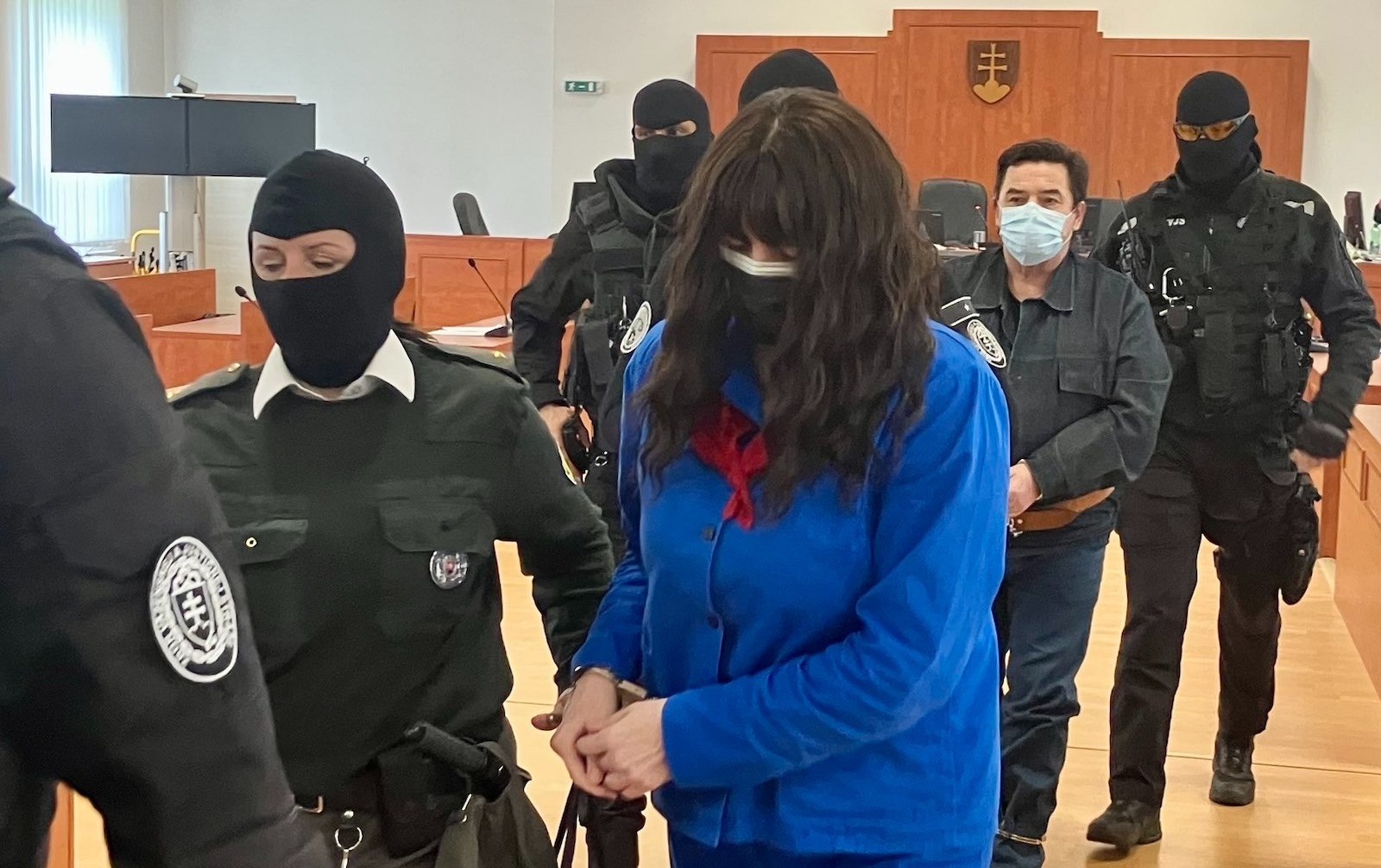
Alena Zsuzsová and Marian Kočner in court, 12.05.2023. Source: ICJK
There were two more defendants in this case. Dušan Kracina was also found guilty for preparations for murder of prosecutors, sentenced for 8 years in medium security prison, but Darko Dragić, who was supposed to be the hitman for this murder, was found not guilty.
This verdict comes more than five years after the murder. Despite everything, society has moved on. The government that replaced Smer began with an overwhelming, even constitutional, majority. But it fell apart, and earlier this week its last remnants were replaced by a technocratic placeholder government appointed by the president to keep the country together until early elections in September.
Robert Fico is poised to win again. Many of the oligarchs, fraudsters and thieves who have been indicted in the meantime may be waiting for the old days to return. Marian Kočner, who is for now serving only one prison sentence, albeit very long – 19 years, for economic crime – included.
However, the prosecutors and lawyers of the Kuciak family have already appealed to the Supreme Court again. This will take months, possibly up to a year. Until that decision is made, the number of years Marian Kočner will have to serve is not final.
Repeated trial
The first trial of the murderers of Ján Kuciak and Martina Kušnírová began in January 2020. Miroslav Marček, who shot Ján and Martina, and his cousin Tomáš Szabó, who was his driver, have already been sentenced to long prison terms. Zoltán Andruskó, the middleman in the murder of Ján Kuciak, who later cooperated with the police, was also sentenced to 15 years.
However, Marian Kočner and Alena Zsuzová were acquitted by the court of first instance in September 2020. This decision was overturned by the Supreme Court in June 2021, which also ordered the Specialized Criminal Court in Pezinok to rehear the case from the beginning.
At the repeated hearing, the case was also linked to the case of the preparation of the murders of prosecutors Maroš Žilinka, Daniel Lipšic and Peter Šufliarsky. Marian Kočner and Alena Zsuzsová were accused of ordering the murder of Ján Kuciak and ordering the attempted murders of the prosecutors. Zsuzsová was found guilty for ordering murders of two prosecutors, but not guilty of ordering the hit against Daniel Lipšic, nowadays special prosecutor of Slovakia.
According to the indictment, Kočner began to resent these prosecutors in 2017 because they were overseeing several cases involving him or people close to him. At the same time, he began to see investigative journalist Ján Kuciak as an enemy. Kuciak also exposed several of Kočner’s cases, and his findings led to criminal investigations.
Kočner therefore had all four of his future victims followed and later ordered their deaths through Alena Zsuzsová, who passed the order on to her associate Zoltán Andruskó. In the end, he found two killers who were paid to kill prosecutor Maroš Žilinka (the current General Prosecutor of the Slovak Republic) and journalist Kuciak.
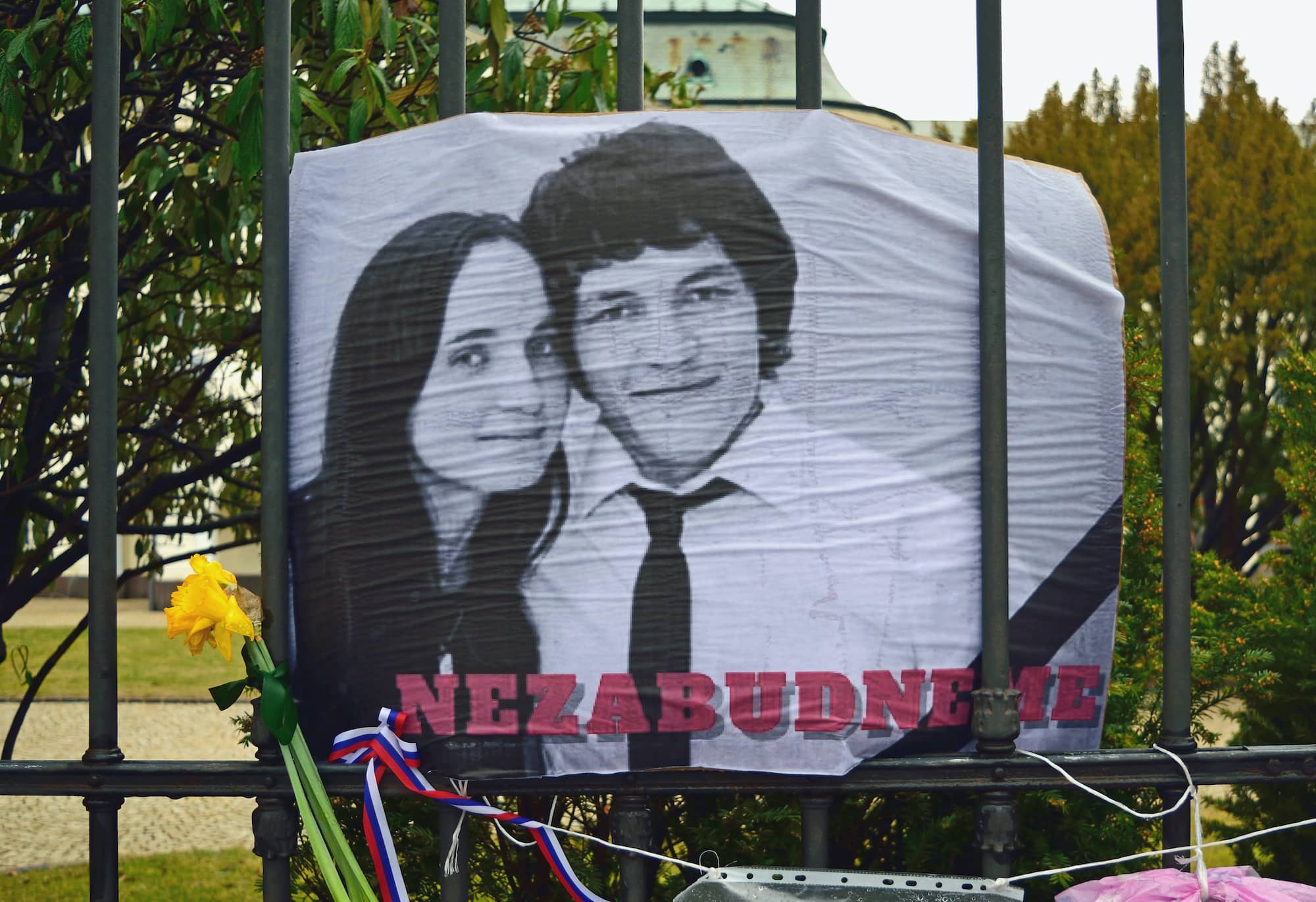
Photograph of the murdered journalist Jan Kuciak and Martina Kusnirova with the inscription “we will not forget”. Bratislava, Slovakia, 16 March 2018. Source: Rosalicka / Shutterstock
Only the murder of Ján Kuciak, in which his fiancée Martina Kušnírová was also shot, was carried out. According to the prosecution in this case, Zoltán Andruskó later found other people – Dušan Kracina and Bosnian Serb Darko Dragić – to kill Maroš Žilinka but they never did finish the job and are now also charged in the same trial.
In their closing arguments, the prosecutors said that the evidence was strengthened by the merger of the two cases. “The court has a more comprehensive view thanks to the fact that the case was considered together with the second act – the preparation of the murders of Žilinka, Lipšic and Šufliarsky,” said the prosecutor overseeing the current trial, Matúš Harkabus, in his closing statement. According to the indictment, no one other than Marian Kočner had the motive to order the murder of all four people: Kuciak, Lipšic, Žilinka and Šufliarsky.
Kočner’s defense, on the other hand, claimed that the defendant had no motive to order these murders. “Dozens of journalists, all media, often wrote half-truths about me, and since 2016 only lies. Ján Kuciak was one of many. I didn’t care about him and his articles didn’t threaten me in any way,” Kočner claimed in his own closing statement.
The judges decided that not all of the acts even happened – they do not believe it was proven that anyone ever actually ordered the murder of Lipšic – and majority of judges decided the evidence is not enough to prove the guilt of Kočner beyond “any reasonable doubt.”
Surveillance, ciphers and witnesses
In 2017, Ján Kuciak was surveilled by a commando under the command of former Slovak intelligence officer and later Marian Kočner’s close associate Peter Tóth. Kočner’s defense was based on the claim that the surveillance was only intended to gather material for Kočner’s Facebook videos, which he intended to publish on a specially created Facebook page. Kočner claims that he wanted to publish “dirt” on Kuciak and other journalists as a means of defense, but he never thought of killing anyone.
This statement was however contradicted by the fact that the commando took photos of the surveillance, which were sent to Kočner on USB sticks along with reports on the investigative journalist’s movements. According to the indictment, these are the same photos that Alena Zsuzsová showed on a laptop to Zoltán Andruskó, who later showed these pictures to the murderers so that they knew the appearance and habits of their victim.
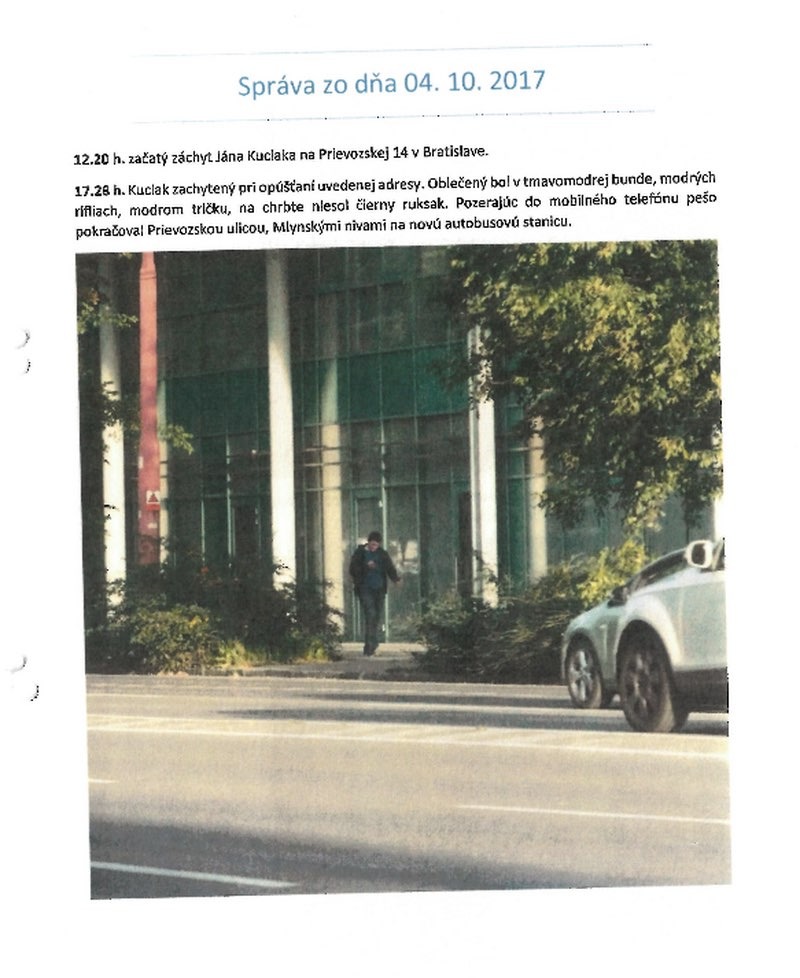
An example of the surveillance report on Ján Kuciak. Source: OCCRP s
According to the judges, it was proven that Alena Zsuzsová used these photos while ordering the murder of Ján Kuciak. But it was not proven when and how she got these materials, and therefore, that Marian Kočner was the one who gave them to her and that he gave them to her with the intent connected to murder.
The defense focused on questioning the reliability and truthfulness of key witness Zoltán Andruskó. “Practically since his arrest, he has created a new version of the plot with every testimony, taking into account the current development of the plot, which was broadcasted live in the media,” Alena Zsuzsová’s lawyer Štefan Neszméry said about Andruskó.
This was partially what the judges finally decided too. They decided to believe Andruskós testimony, but only in part. The judges once again confirmed that they consider his testimony as less trustworthy because Andruskó gained some benefits (lower sentence) in exchange for his cooperation with investigators.
However, this is a common practice in investigating organised crime. Since his arrest, Zoltán Andruskó has been consistent in his testimony about key moments: He gave his first statement hours after his arrest. In this first testimony, he describes how Alena Zsuzsová showed him text documents written in Microsoft Word on a thumb drive in a folder called “Kuciak”, and he testified that these documents described the daily routine of the murdered journalist and contained photographs.
In Kočner’s house were found USB sticks from the surveillance that he ordered and paid for. A folder named “Kuciak” was found on these USB sticks, containing Microsoft Word documents with a description of the surveillance by Tóth’s commando, including embedded photos.
Another key piece of evidence is the communication via the Threema application – an encrypted communication app used by Kočner and Zsuzsová. Europol specialists were able to recover the communication from Kočner’s phone, despite his previous attempts to delete all the files.
In this communication, according to the indictment, Kočner and Zsuzsová did not speak openly, but in code. For example, Zsuzsová allegedly informed Kočner of the murder by telling him that her “tooth had fallen out”. She had previously written to him that she had dreamed about teeth falling out and that, according to her dream book, it meant death. The morning after the murder, she had written to him that “one had already fallen out” in reality.
They also often talked about “itching”, “scabies” and “cream for itchs/scabies”. According to prosecutors and linguistic analysts, these were all codes for murder. “Scabies” was the journalist, “itch” was the unpleasantness that his work caused Kočner, and “cream” was a means to solve this unpleasantness: murder.
The defense challenged Threema as evidence in several ways: Kočner and Zsuzsová first claimed that someone manipulated the conversation and added messages to it, and at other times they tried to explain away individual messages as having no hidden meaning.
For example, according to the indictment, the “snow” was also supposed to be a code word for something that prevented Kočner and Zsuzsová from achieving their goal – murder – and the melting of the snow, on the other hand, was a code for the successful realization of this goal. This is presumably why there are messages before the murder in which they complain about the snow and curse it. And this is probably also the reason why Kočner asked Zsuzsová on the morning after the murder whether “the snow had melted”, when she suggested that something had happened.
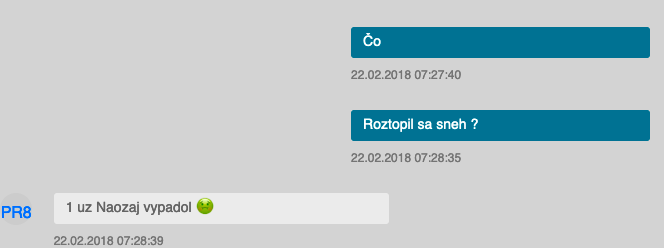
A screenshot of Threema conversation: “What, the snow has melted?” asked the Kočner. “One [tooth] has fallen out for real,” Zsuzsová answered. Source: brucho.blbec.online
Finally, the defense also asked why Zsuzsová and Kočner would even use ciphers and code words to encrypt their messages if they were already communicating through an encrypted application. In such an application, according to Kočner’s lawyer, Marek Para, the communication is carried out in the open.
“The point is precisely that in the event of what happened [someone being able to break the encryption and read their messages], the content of the communication would be revealed, but its meaning would not be clear,” said prosecutor Matúš Harkabus in his closing statement.
The senate of the Specialised Criminal Court in Pezinok however, despite all of this, was not fully convinced. And in such a case, it decided to rule in accordance with the “in dubio pro reo” principle.
“The evidence provided must prove unequivocally and with the highest degree of certainty that the defendant is the person who committed the act. In case of doubt, these doubts must be interpreted in his favor. Even a high degree of suspicion is not enough,” said the chair of the senate, Ružena Sabová, in the justification of the verdict. At the same time, according to her, even after the repeated trial, there were still “reasonable doubts that did not lead all the judges to a firm conviction of the defendant Kočner’s guilt.”
The Slovak version of this article was published on icjk.sk
 Support independent investigative journalism in Slovakia,
Support independent investigative journalism in Slovakia,
you can donate here.
Tomáš Madleňák is a Slovak journalist who has worked for the Investigative Center of Ján Kuciak since 2020. He is based in Bratislava.

